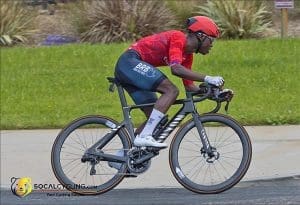Cycling is a full-body workout. Because it is an aerobic exercise, it raises your heart rate and breathing. Your body uses oxygen to turn fats and sugars into energy, so the more you breathe during biking, the more calories you burn. In fact, Medical News Today shares that biking can burn as much as 444–733 calories for an 185-pound rider who cycles vigorously for 30 minutes. This makes it an excellent exercise for overweight and obese riders looking to lose weight.
Interested in learning more? Read on to find out more about why cycling remains a great weight loss option as obesity rates rise in the US—and how you can maximize its weight loss benefits as an overweight or obese rider.
The state of obesity in the US
Obesity is becoming more prevalent in the US, with multiple states experiencing a rise in obesity rates. In particular, California’s obesity rate was at 28.1% in 2022. The condition puts individuals at risk for developing chronic conditions, which is why many obese individuals turn to strategies like calorie restriction to lose weight. For those looking to boost their efforts, non-caffeinated weight loss supplements may provide additional support, especially when biological and genetic factors make weight loss more challenging.
As a result, more people are turning to a process called medical weight loss. Here, healthcare professionals design a program and prescribe medications to make weight loss easier for obese individuals. Usually, candidates are prescribed Metformin for weight loss: it’s an affordable option that can reduce one’s appetite, so they don’t eat more than necessary. The medication is especially effective for overweight and obese individuals with insulin resistance issues, as it was originally designed for diabetes.
However, medical weight loss doesn’t work unless it’s done alongside healthier lifestyle habits like proper nutrition and exercise. This is where cycling comes in to boost weight loss efforts. It’s low-impact, which is advantageous for those who don’t want to further stress their joints because of their weight. You will also benefit from outdoor cycling more than using a machine since it requires you to actively engage your muscles to move forward and go over hills and bumps.
If you want to try it, here’s how you can maximize cycling for weight loss:
How to maximize cycling for weight loss
Make cycling part of a holistic weight loss strategy
You can’t make the most out of cycling if you do it randomly—it must be part of an effective weight-loss strategy. That means you need to also follow a sustainable diet plan that nourishes your body, fuels your workouts, and prevents further weight gain. For cycling, you may want to eat a diet rich in carbohydrates, fiber, and protein to provide energy, build your muscles, and keep you full for longer. “And even though you may think more biking means more weight loss, it’s important to schedule in one off day per week to help your muscles recover and reduce inflammation,” says Frazer Clacherty of Down to Ground. If you’ve been prescribed weight loss medication, it needs to be part of your weight loss plan, too.
Yet it’s also important to note that even if cycling contributes to the exercise portion of your weight loss plan, you also need to work on building your muscles to help you go for longer and more intense rides. The article “Squats to Improve Your Cycling Performance” recommends practicing squats. This strengthens your legs and engages the upper body and core muscles for better balance and safer biking. Some squats you can do are regular air squats, goblet squats, and thrusters using a dumbbell when you’re feeling stronger.
Consider getting an electric bike
Biking as an obese or overweight individual can be challenging. You might find it hard to move forward as you haven’t built your leg muscles yet, discouraging you from cycling. To prevent this, consider getting an electric bike (e-bike) first. An e-bike is equipped with a motor to assist you when pedaling. It’ll still require the extensive use of your legs, arms, and core, so you can kickstart your weight loss efforts while slowly acclimating your body to increasingly strenuous physical activity. That way, you can motivate yourself to keep going and better lose weight through cycling over time. Just note that though e-bike use is legal in California, you must follow specific rules. Arguably, the most critical one to remember is that you must follow a 28 mph speed limit for everyone’s safety on the road.
Get the right bike fit
Bike fitting means adjusting your bike to your needs. As an obese or overweight individual, this could mean getting a stronger frame to support your weight and using bigger tires for improved balance. For example, steel bike frames are better at supporting heavier weights, making cycling safer. You can also get a bigger seat for comfort and adjust the pedals to suit your leg length. Additionally, you can change the handlebar width for better grip. You can go to a bike shop to consult experts on the right bike fit. They may ask about your cycling goals, bike preferences, and current weight to ensure that they can help you build the best bike for weight loss.
Biking is one of the best exercises to lose weight. Make the most out of biking as an obese or overweight rider by following our tips!
Photo by Jose Ricardo Barraza Morachis
No products found.
















